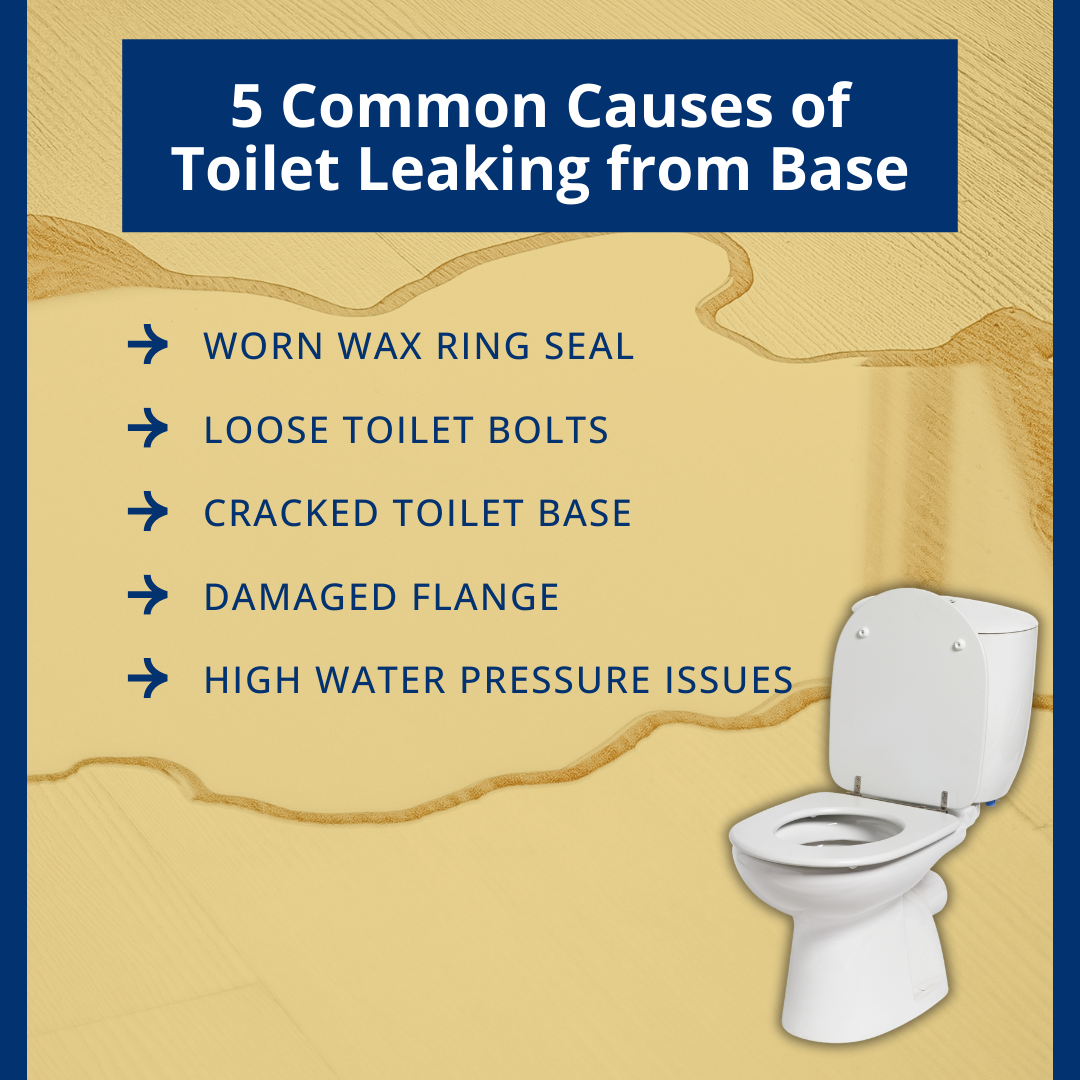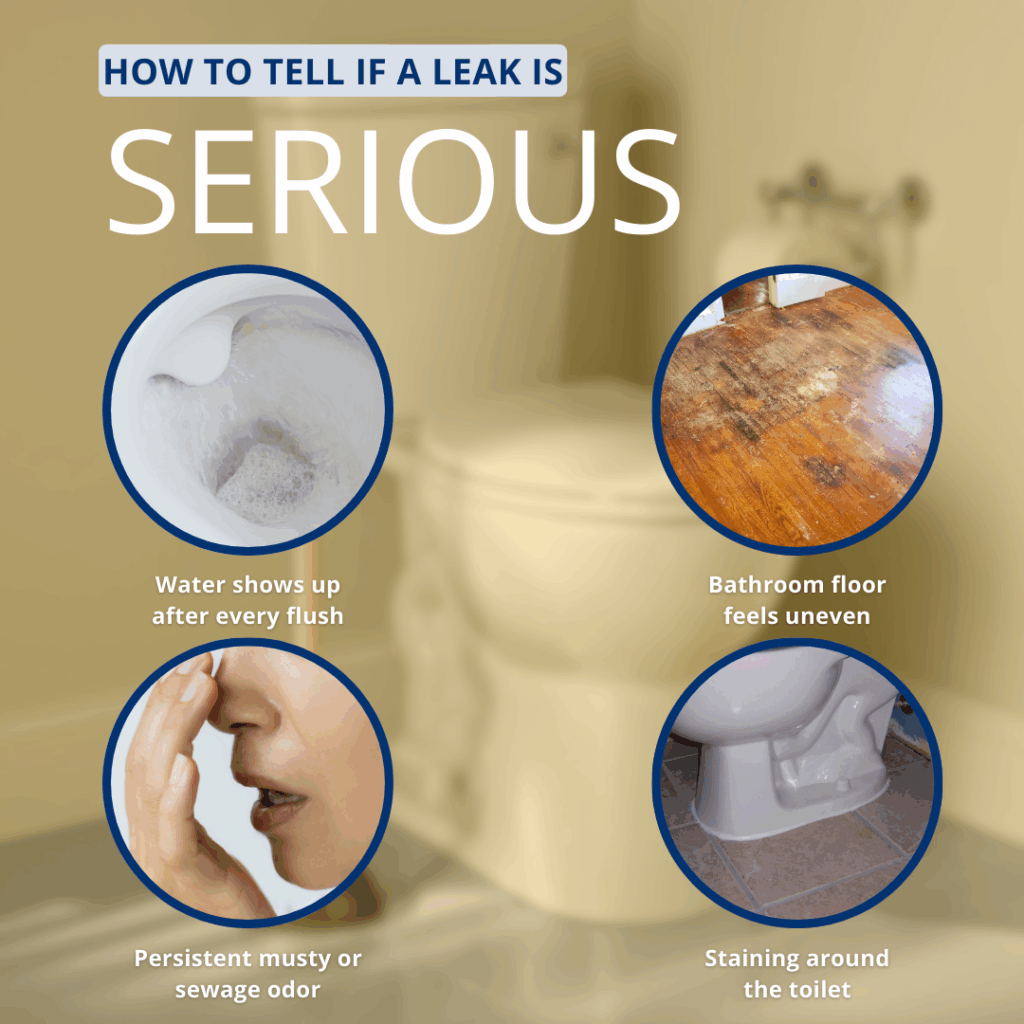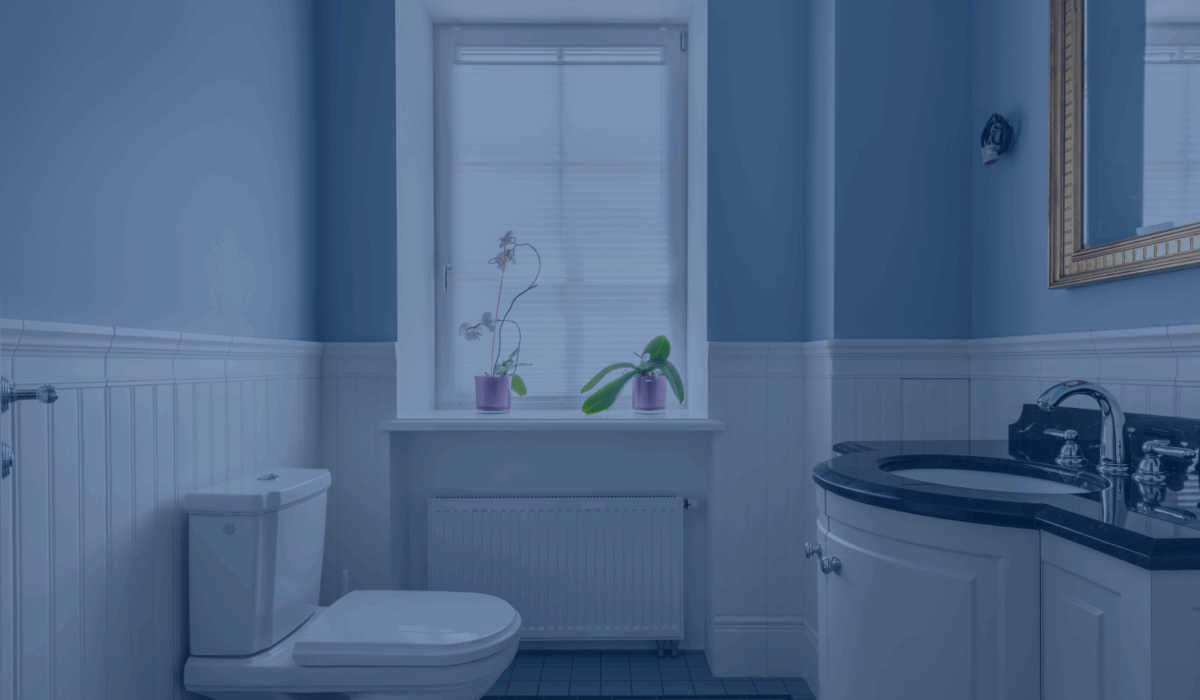A toilet leaking from the base is a problem most homeowners will face at some point. While it may start as a small puddle of water on the bathroom floor, it can quickly turn into a bigger issue if ignored. Leaks at the base of the toilet are usually caused by a bad wax seal, loose bolts, or hidden structural damage.
The good news is that these problems can often be fixed if caught early. The bad news is that leaving a toilet leak unchecked can lead to water damage, mold, and even subfloor replacement. In this guide, we’ll explain what causes a toilet to leak from the base, how to tell if it’s serious, and what to do next.
Why Is My Toilet Leaking from the Base?
Not every puddle around a toilet means you’re dealing with a base leak. Sometimes, condensation forms on the outside of the toilet tank, especially in humid climates, and drips down onto the floor. In other cases, a leaking supply line or shut-off valve may drip water that gathers around the base.
The difference is that these leaks don’t always appear right after flushing. A true toilet base leak happens when water escapes between the toilet and the drain pipe below. The most common sign is water pooling after every flush.
When this occurs, it means the seal between the toilet and the floor is broken. That seal prevents dirty water from seeping out. Once it fails, your bathroom floor and subfloor are at risk.

Common Causes of a Toilet Leaking from the Base
Here are the most frequent reasons a toilet leaks around the bottom. Knowing the cause helps you understand whether it’s a quick fix or a more serious repair.
1. Worn Wax Ring Seal
Every toilet has a wax ring that sits between the base and the drain flange. Its job is to seal out water and sewer gases. Over time, this ring can dry out, compress, or simply wear down. When that happens, water escapes with each flush.
Signs of a bad wax ring include:
- Puddles forming immediately after flushing
- Persistent bathroom odors that smell like sewage
- Slight toilet movement when you sit down
Replacing a wax ring is a fairly common repair. It costs between $150 and $391, depending on labor rates in your area.
2. Loose Toilet Bolts
Toilets are secured to the floor with bolts, often hidden under small plastic caps. When these bolts loosen, the toilet can shift slightly, breaking the wax ring seal. Even a small amount of movement allows water to escape.
A quick check is to gently press or rock the toilet. If it moves, the bolts likely need tightening or replacement. Be cautious, though; over-tightening can crack the toilet base.
3. Cracked Toilet Base
Although porcelain is durable, it can still crack. A hairline crack near the bolt holes or along the base can allow water to seep out slowly. These cracks may not be obvious at first, but can worsen over time.
Unfortunately, once the base is cracked, sealing or patching is rarely a long-term fix. In most cases, the entire toilet must be replaced.
4. Damaged or Over-tightened Flange
The flange is the pipe fitting that connects the toilet to the drain. If it becomes corroded, broken, or installed incorrectly, the seal will not hold. Sometimes DIY repairs or over-tightened bolts damage the flange, causing leaks.
Fixing a flange problem usually requires removing the toilet and replacing or repairing the flange. It’s a more advanced job that’s often best left to professionals.
5. Overflow or High Water Pressure Issues
While less common, toilets under very high water pressure or with bowl overflow issues can leak at the base. This happens when water forces its way past the wax seal. If your toilet constantly runs or your home has unusually high pressure, the extra stress may contribute to leaks.
According to the U.S. Environmental Protection Agency, even a small, slow toilet leak can waste up to 200 gallons of water per day. That’s not only a risk for your floors but also for your water bill.
How to Tell if the Leak Is Serious
It’s not always easy to know whether a base leak is minor or dangerous. Here are signs that your toilet leak needs immediate attention:
- Water shows up after every flush. This means the seal is failing consistently.
- Your bathroom floor feels soft, spongy, or uneven. Water may have already soaked into the subfloor.
- There is a persistent musty or sewage odor. This suggests both moisture and trapped sewer gases.
- Visible staining or discoloration around the toilet. Water damage may already be spreading under the flooring.
Once water gets into wood or subflooring, repairs can cost thousands of dollars. That’s why addressing even small leaks quickly is so important.

Can You Fix a Toilet Leaking from the Base Yourself?
Some leaks are simple enough for a homeowner to fix. Replacing a wax ring or tightening bolts is possible with basic tools, patience, and a little know-how. If you’re handy, this repair may save you money.
But there are risks with DIY, including:
- Over-tightening bolts can crack the toilet base.
- Replacing a wax ring incorrectly may lead to the same problem reappearing.
- Hidden leaks may continue unnoticed, damaging the floor beneath.
If the leak is from a cracked toilet, a broken flange, or long-term hidden water damage, professional guidance is the safest option. In fact, during a home inspection, trained professionals often find hidden leaks before homeowners even realize there’s a problem.
Why Home Inspections Help Catch Toilet Leaks Early
Many homeowners don’t notice base leaks until damage has already spread. That’s where a professional inspection can help.
During an inspection, experts look for:
- Signs of moisture around toilets and sinks
- Soft or weakened flooring that indicates water damage
- Stains or mold near plumbing fixtures
- Improper installation that could cause future leaks
For homeowners planning to buy or sell a house, this is especially important. A leaking toilet might not just mean a wax ring replacement; it could reveal structural water damage or mold remediation costs.
Edifice Inspections helps homeowners catch these problems early so they can be fixed before they grow into expensive surprises.
Related Questions
Why is water pooling around my toilet but not leaking?
Condensation from the tank or a loose supply line can drip water near the base, but that doesn’t always mean the toilet itself is leaking.
Can a leaking toilet damage the floor beneath it?
Yes. Even small leaks can rot wood, cause mold growth, and weaken the floor structure.
How long should a wax ring last on a toilet?
Wax rings can last 20 to 30 years, but movement or installation errors can cause early failure.
Do I need to replace my toilet if it’s leaking from the base?
Not always. If the wax ring or bolts are to blame, a repair may solve the problem. A cracked base usually means full replacement.
Conclusion
A toilet leaking from the base usually points to a worn wax ring, loose bolts, or damage to the toilet or flange. While some issues are quick repairs, others may lead to hidden water damage if ignored.
Catching leaks early is key to protecting your home. A professional inspection can reveal whether it’s a minor fix or a bigger problem that needs immediate repair.
If you notice water pooling around your toilet, schedule a home inspection with Edifice Inspections. Our team will help identify leaks, prevent costly damage, and keep your home safe.

